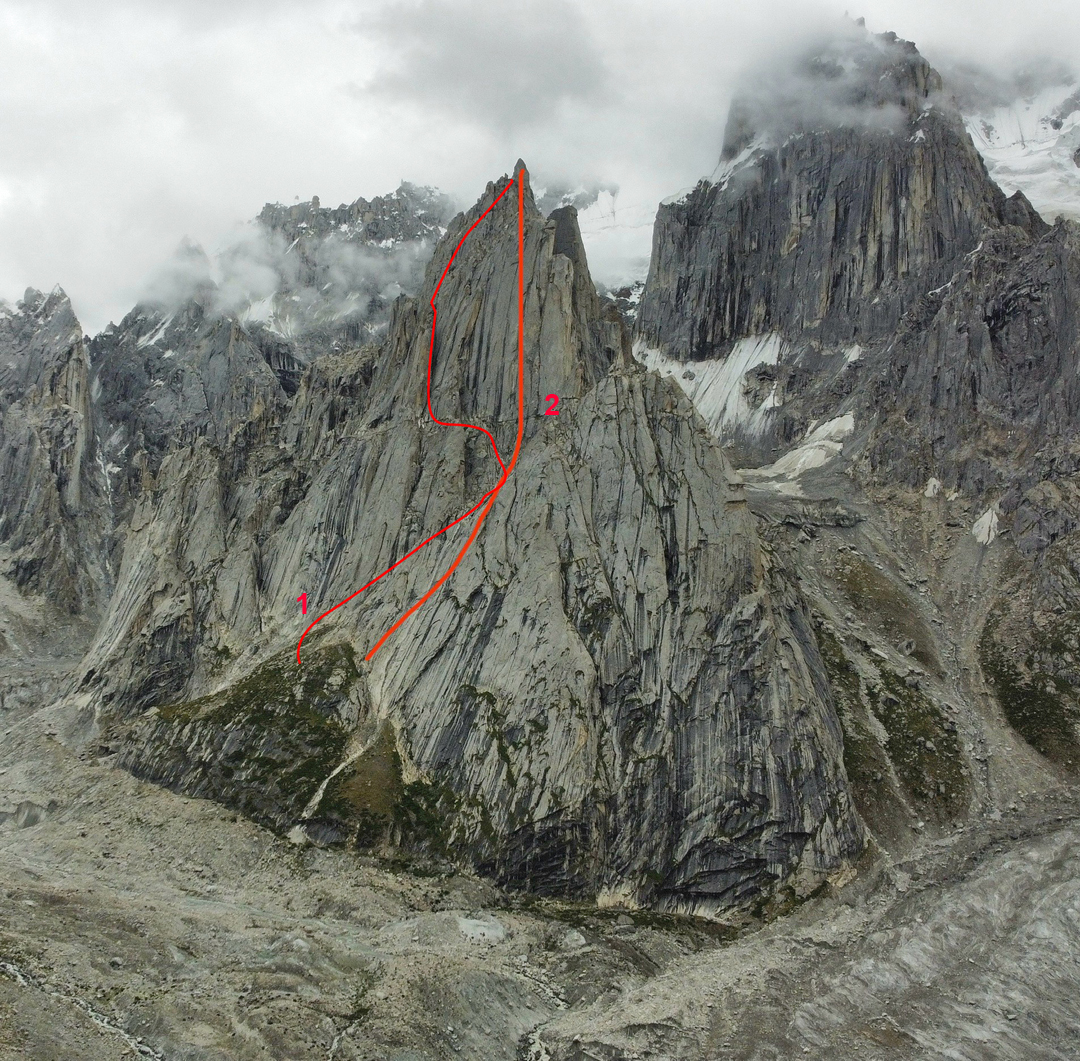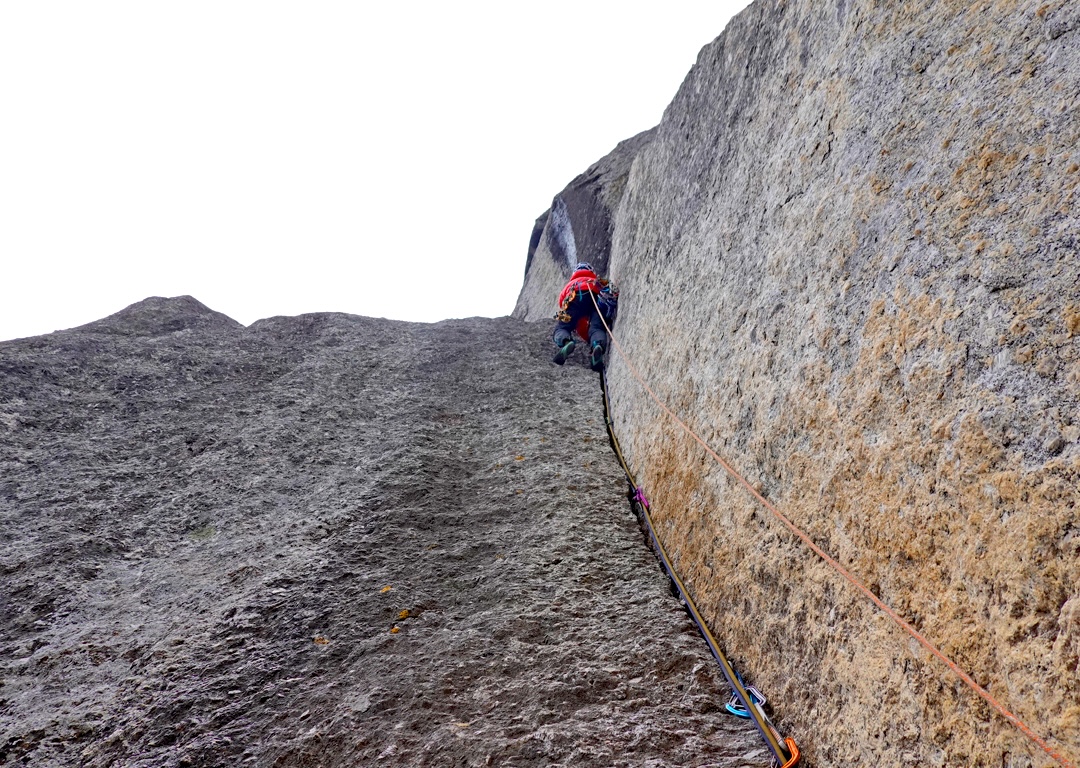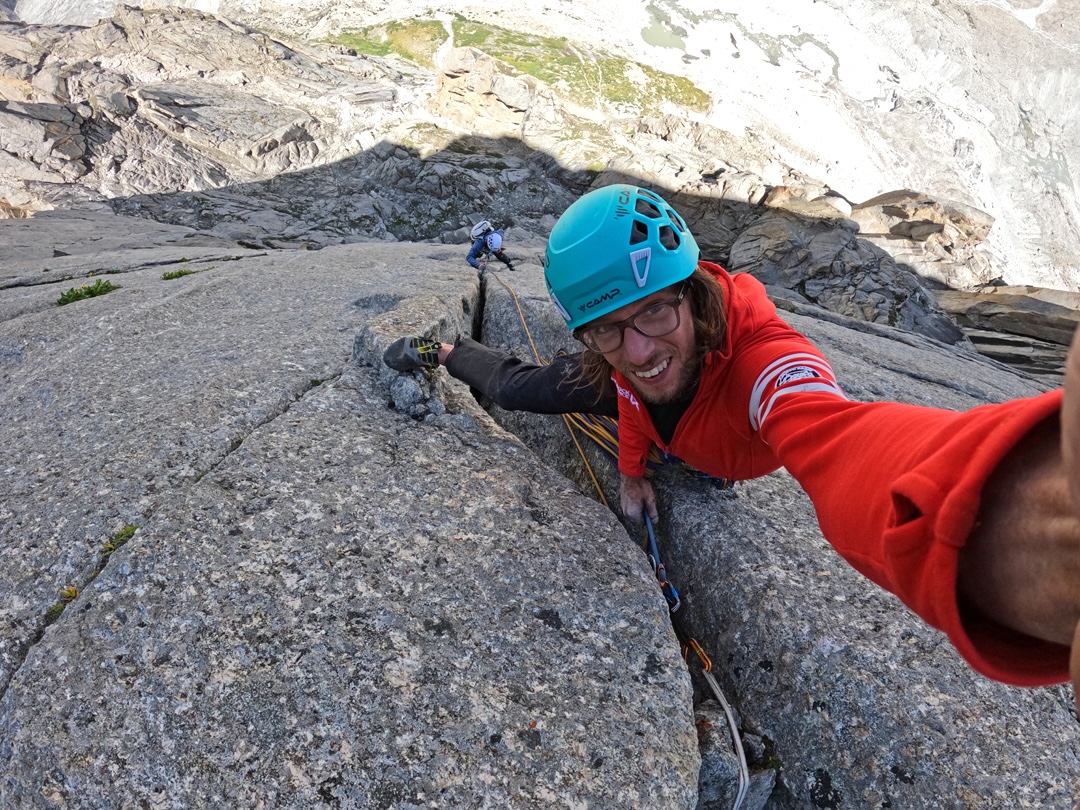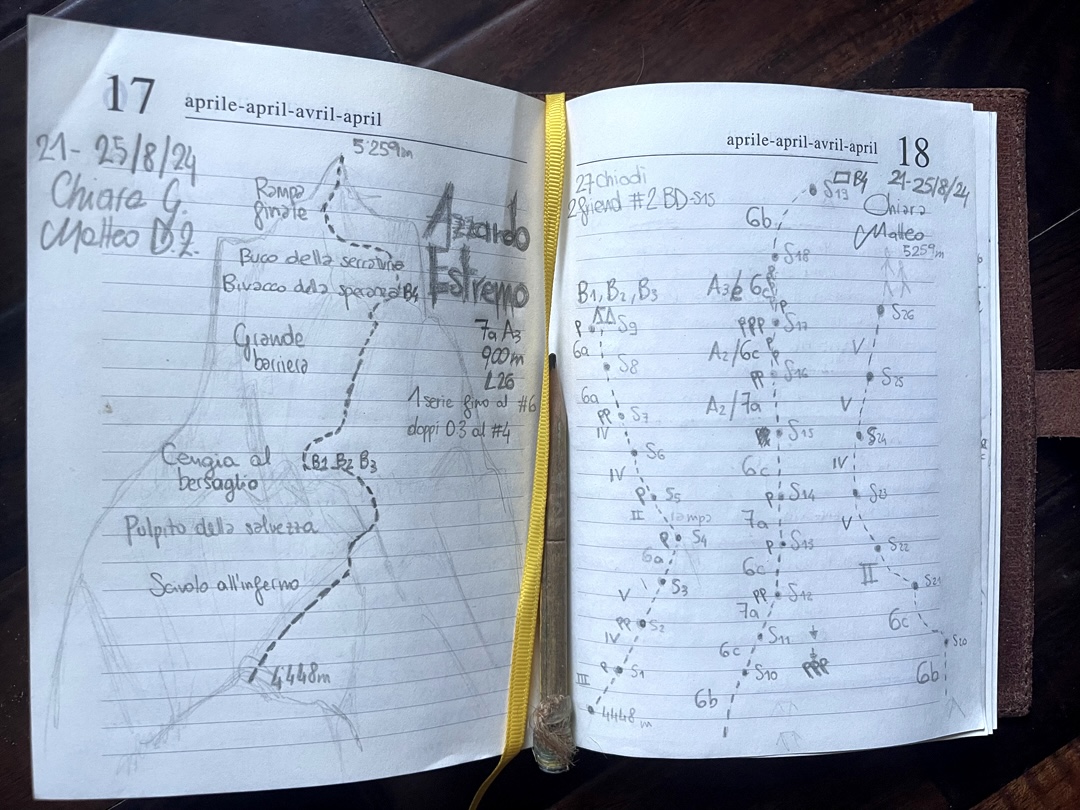Sckem Brakk, Northwest Face, Azzardo Estremo
Pakistan, Karakoram, Tagas Mountains
Each of us has a dream drawer. Mine is overflowing with images of walls, all over the world. From time to time, I take one of these images and hang it on the wall, starting a journey that will transform a dream into reality.
Chiara Gusmeroli and I arrived in Pakistan in early August and a few days later set up base camp in the Nangma Valley, south-southeast of Amin Brakk and directly opposite Peak 19 on the Jerzy Wala sketch map. To reach here, we had crossed gravel and moraine, and then as if by magic we emerged onto a lush plateau with grazing cows and their herders. The latter said nothing but were obviously happy to see our amazement at their beautiful surroundings.
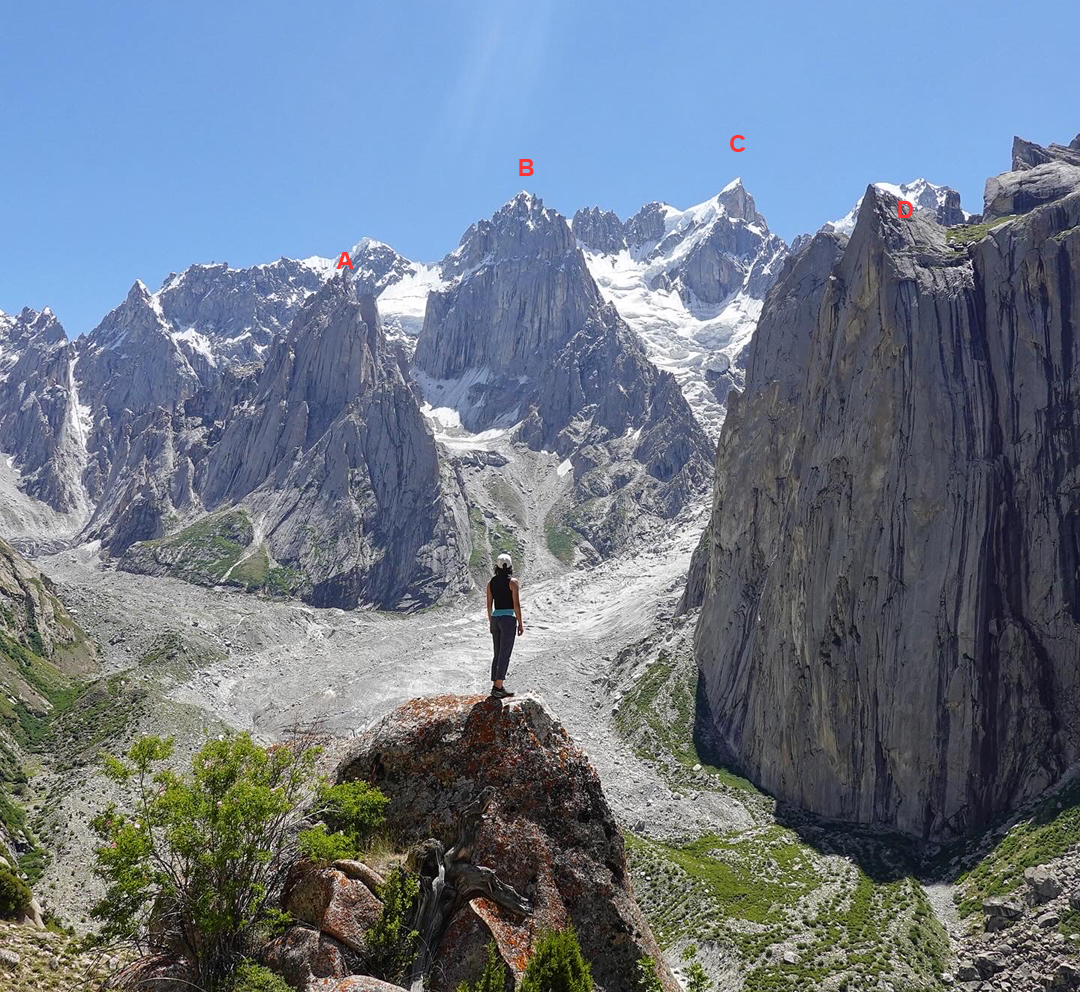
After a week spent with altitude headaches and classic intestinal problems, and studying nearby walls through binoculars, we realized a lifetime wouldn’t be long enough to climb all the peaks within a three-hour walk from camp. However, almost immediately we were forced to cross off some potential projects due to huge amounts of rockfall. Scared, we decided to look at the northwest face of Peak 19 (5,259m GPS, 35°21’56.82”N, 76°29’27.24”E), which appeared to be the most compact wall in the valley. It had no name, so we christened it Sckem Brakk (see note below about a prior attempt on this peak).
We climbed as fast as possible, convinced we could be up and down in two days. Cracks were all the same width, meaning we had to use our cams carefully, and we often found ourselves 20m above protection. Higher, the cracks became superficial and choked with grass. I tried to clean with a hammer, but it made progress far too slow, and we returned to base camp dejected.
On August 21, we made a second attempt, carrying provisions for five days and a small ice axe for cleaning the cracks. We were slower this time due to heavier packs and much colder temperatures. After two days of climbing, we were forced to take a rest day on the large ledge below the headwall (top of pitch nine) due to bad weather.
We continued up on days four and five, using aid where we couldn’t garden the cracks. After three complex crux pitches, we arrived, late in the evening, at a small bivouac spot on top of pitch 19. We spent the night in almost sitting positions and the next day left for the top amid a small snowstorm. Seven pitches later, we reached the summit at 9 a.m., in weather that was now almost perfect.
We started down our route to the big ledge where we had left the tent. On arrival, we found it completely destroyed: A large rockfall had swept the area. Thinking about how lucky we had been, we accelerated our pace toward base camp, with a feeling this paradise could easily turn into hell. Only in base camp with a Coca-Cola in hand did we understand we had made it. We named the route Azzardo Estremo (900m, 26 pitches, 7a A3). [In August 2021, Pete Fasoldt and Jonathan Schaffer (both USA) climbed a line in the lower half of the face that appears to be quite close to that followed by the Italians. They then moved well to the left and climbed to a point very close to the summit, where they were shut down by the blank final slab. The AAJ 2022 report gives the altitude of the peak as 5,007m, but it is considerably higher—the 5,259m figure is more accurate.]
—Matteo De Zaiacomo, Italy


